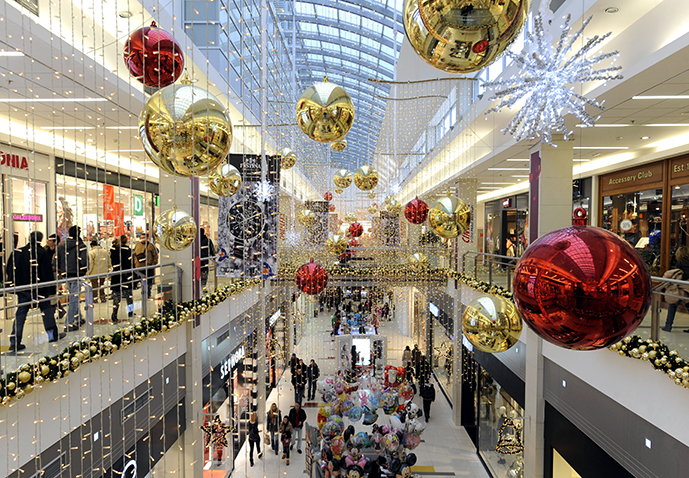Footfall on Boxing Day 2022 was +38.8% higher than on Boxing Day 2021 but -18.2% lower than on Boxing Day 2019, according to retail experts Springboard. Footfall rose by +36.6% from Boxing Day to December 27, with a greater uplift in retail parks and shopping centres than in high streets (+63.8% in retail parks and +45.4% in shopping centres vs +19.7% in high streets). Diane Wehrle, insights director at Springboard, said this was not a surprising result as consumers sought out discounts in larger retail stores located in retail parks and shopping centres, and replenished groceries in food stores on retail parks.
Footfall on December 28 increased by a further +6.7% from December 27 and then by +13.4% from December 28 to 29. Footfall dropped away on December 30, with a decline of -2.6% from the day before and on New Year’s Eve it fell once again and by a greater magnitude of -14.8% from December 30.
Over the six days from Boxing Day, footfall was +16.3% higher than on the same dates in 2021, with double digit rises on each day other than on December 31when footfall was just +1.9% higher than on December 31, 2021. The gap from 2019 over the six days from Boxing Day averaged -11.9%, however the gap was narrowed by a significant uplift of +26.6% on December 29 which fell on a Thursday vs Sunday in 2019. Excluding this day, the gap in footfall from 2019 averaged -19.5%.
Said Wehrle: “Not surprisingly, footfall across UK retail destinations during the week of Christmas was significantly lower than in the week before that in the final trading week.
“Footfall was higher than in the same week last year, but not significantly, despite Christmas 2021 being overshadowed by Covid. A key factor here is the offset of Christmas which meant that last week began on Christmas Day – when footfall is at its lowest – whilst in 2021 the week began on Boxing Day when many stores were open and trading. In 2019 – the last Christmas before Covid-19 – the offset is even greater, with Christmas Day falling part way through the week before and Week 52 commencing on December 29, 2019.
“With this in mind, it is therefore more helpful to examine footfall last week against the same dates in previous years, eg. Boxing Day 2022 vs Boxing Day 2021, and to understand the change in footfall by day, eg. December 27 vs Boxing Day.
“The week began strongly with footfall on Boxing Day 2022 higher than in 2021 although some of this gain would have been due to Boxing Day 2022 falling on a Monday vs a Sunday in 2021 when trading hours were more limited. In addition to this, a number of stores remained closed on Boxing Day in 2021 and the impact of Covid on peoples’ willingness to make trips was being felt.
“What is significant – and what has been an emerging trend for several years – is that footfall on December 27, 2022, was higher than on Boxing Day. Furthermore, footfall rose further on the following two days peaking on December 29, with the first decline from the day before occurring on December 30, which then continued into New Year’s Eve 2022. This demonstrates that whilst Boxing Day is somewhat of a marker in the annual retail calendar, the key dates for retail spending are now the subsequent days when consumers are likely to have completed visits with family and friends and have time to make trips out.
“Footfall on all but one day last week remained significantly lower than on the same dates in 2019, i.e. Boxing Day 2022 vs Boxing Day 2019 etc. The only day when footfall was higher than in 2019 was December 29 which was likely to be largely due to a comparison between Thursday in 2022 with Sunday in 2019 when trading hours would have been shorter.”


